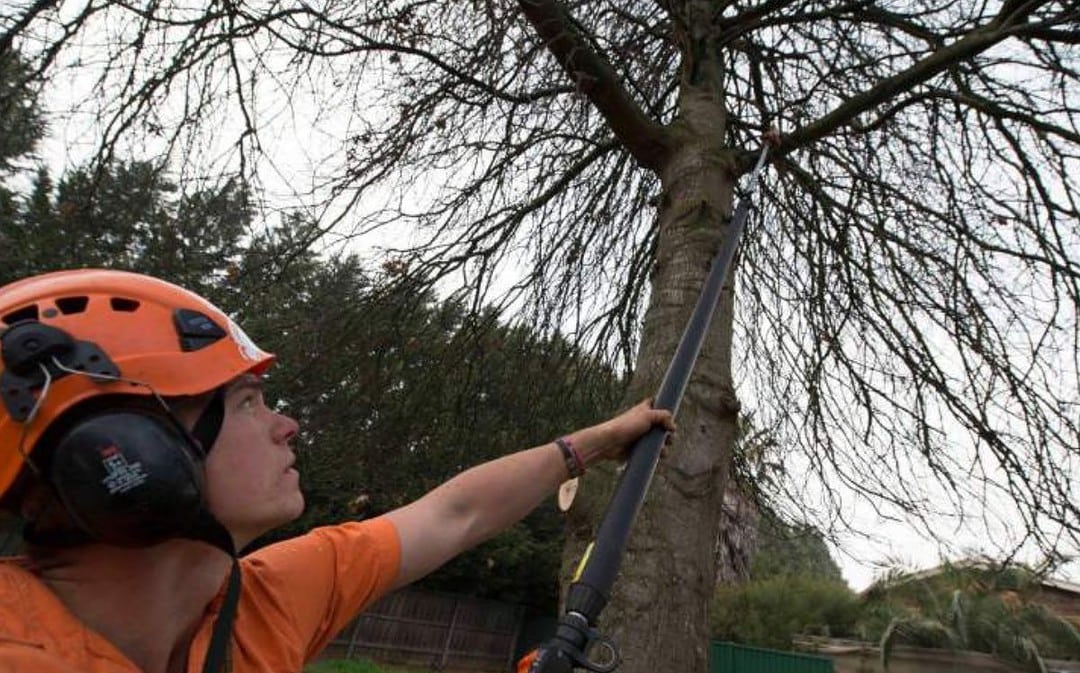Table of Contents
Pruning for Hazard Reduction
Well-maintained trees are a lovely and useful feature to any property. For The Love Of Trees, arborists encourage frequent tree care throughout the tree’s life to ensure a healthy structure. Poorly managed trees may endanger people and property. The degree of a tree’s danger is determined by both the chance of failure and the possible damage caused by a breakdown.
Our ISA (International Society of Arboriculture) Certified Arborists can spot risks inside a tree and offer particular trimming to decrease the risk during your tree care estimate. Deadwood removal, removal of broken branches, removal of defective or impaired growth, branch end-weight reduction, and complete tree removal are some frequent hazard reduction measures.
Removal of Dead Wood
Dead wood in a tree may be caused by insect infestation, bacterial and fungal infections, squirrels, storm damage, and natural development patterns. These decaying limbs will ultimately fall off the tree. The dead lower branches of the Douglas-fir above are easily identified because they lack green needles. Proactive removal of dead wood reduces the chance of injury from a falling branch.
Removal of a Broken Branch
Broken branches are caused by a variety of factors, including wind, falling branches, snow weight, and contact with buildings and other trees. When the branch above, left, fell, it penetrated the ceiling. A damaged branch’s ripped or split wound renders the tree more vulnerable to rot and insect attack. The fractured limb visible above, right, will ultimately fall from the tree, putting buildings, people, or plants below risk. Removing broken branches with precise pruning cuts results in a clean wound that heals faster and eliminates the possible damage caused by the falling branch.
A hanger is a branch that has entirely broken off and is hanging up in the tree. Large hangers are a direct threat underneath targets and should be removed as soon as feasible. In the photos above, left, the broken end of a pine hanger is visible with a rope wrapped around it. The shot above, right, shows the massive size of the removed hanger.
Removal of Flawed or Compromised Growth
Planting the right tree in the right place helps to reduce compromised growth and, as a result, tree failure. As a tree develops and seeks sunshine, water, and nutrition, its branches may become faulty or weakened. Crossing or rubbing branches are removed to avoid wind damage to the bark.
When a secondary stem grows erect beside a central leader, narrow V-shaped unions occur. The inclusion of bark in these thin, upright unions weakens the connection. These narrow unions are also weaker than a union with a central leader or a U-shaped union. When narrow unions fail, the tree might split in half along the trunk, resulting in a massive wound that is unlikely to heal fully. The removal or trimming of a secondary stem promotes better development and unions, lowering the likelihood of stem failure.
Reduced Branch End-Weight
Some branches may become burdened by the weight at the tip of the branch as they grow horizontally. Under normal circumstances, this might lead the branch to droop and come into touch with buildings or other plants. These end-heavy branches may be more prone to breaking under the weight of winter ice and snow. This was the end of the Japanese maple pictured above, which had succumbed under the weight of snow. The structure of the tree will be less prone to fail if the weight at the ends of chosen branches is reduced.
Wind, snow, rain-soaked soil, and ice all contribute to tree demise. Regular tree maintenance promotes a healthy tree shape. For The Love Of Trees’ ISA Certified Arborists recommend correct trimming procedures to avoid the threats presented by failing trees.

